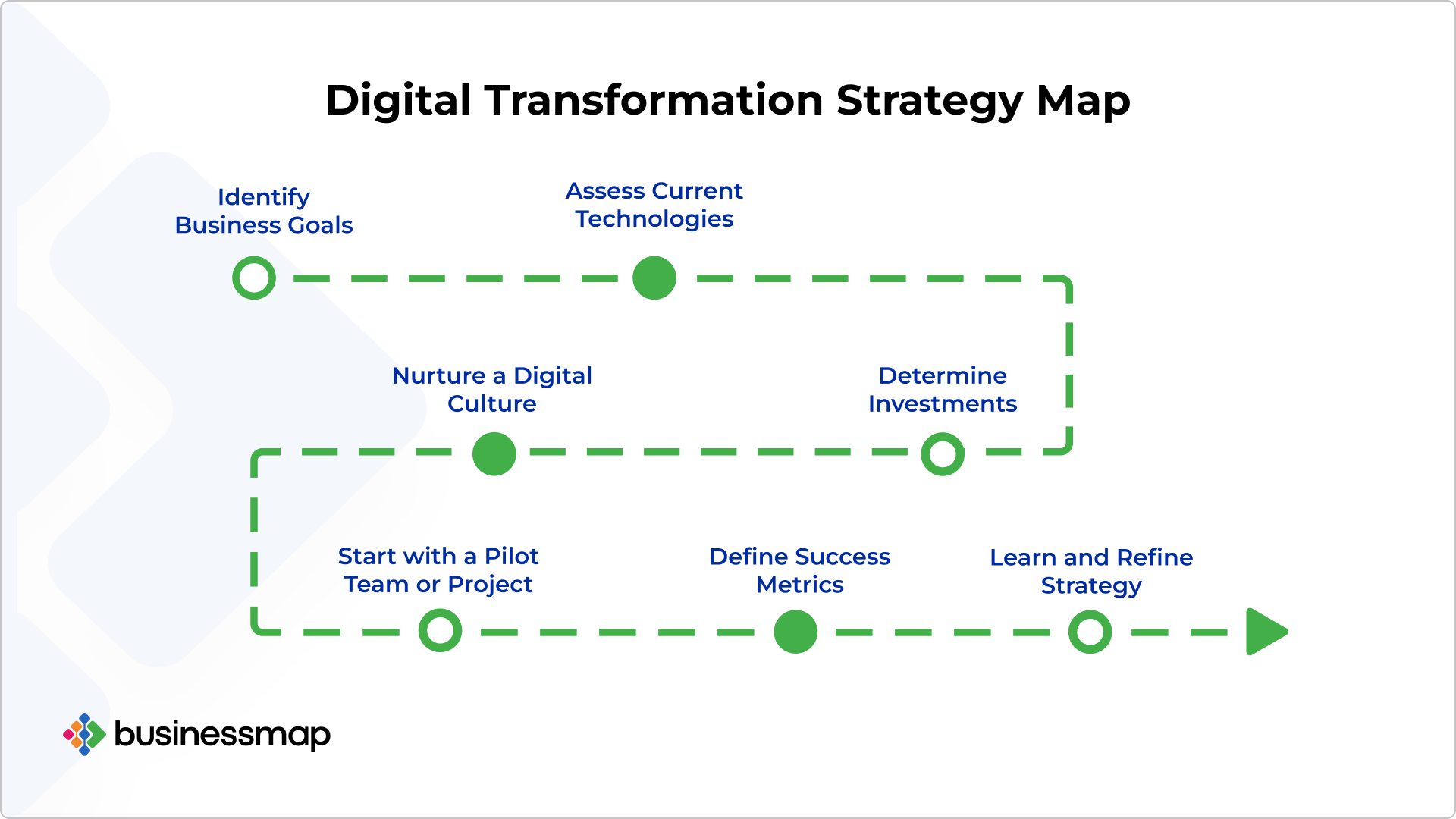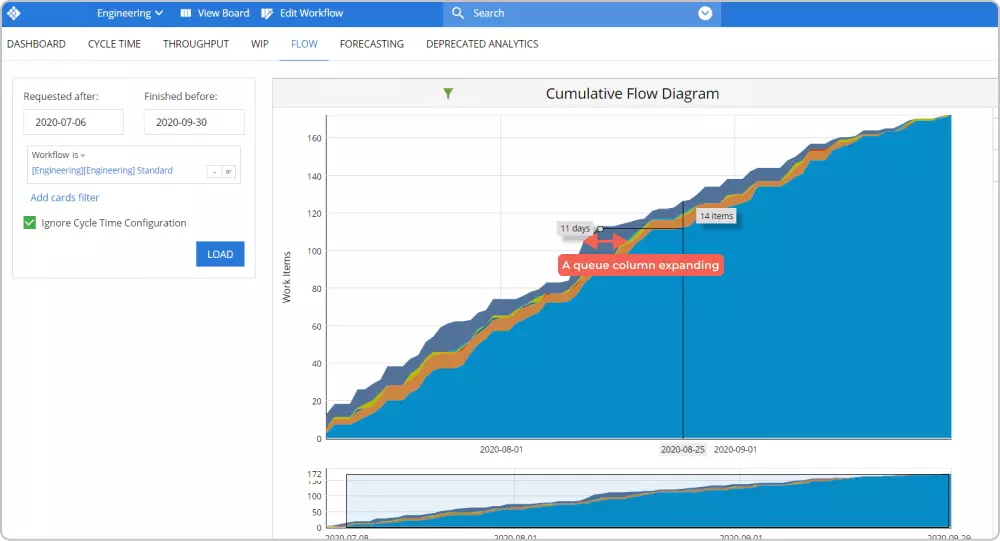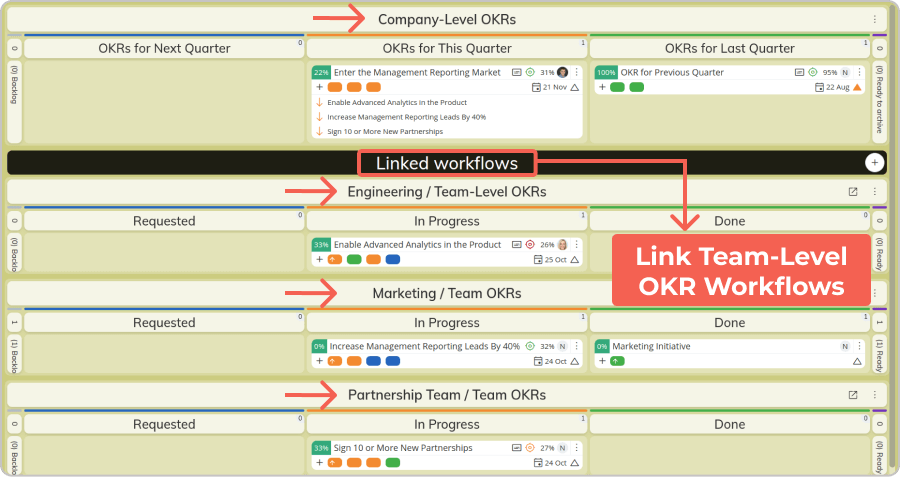Famed for his significant contributions to management theory and practice, Peter Drucker, the “father of modern management,” once said, “You can't manage what you don't measure.” This statement resonates profoundly in today's world of digital transformation. As an estimated 90% of businesses are currently undergoing digital transformation, the challenge lies in measuring the success of these efforts. Without clear metrics, the entire initiative can be put at risk.
But how do you track and measure outcomes to ensure these changes create real value? We'll look into the strategies leaders use to effectively manage and measure digital transformation performance.
Why Bother to Measure Digital Transformation
Measuring digital transformation is not just about tracking progress; it's about understanding the impact and making informed decisions. When data is available, it provides a clear picture of your current state, allowing you to plan your company's future trajectory more effectively.
Since our company's inception, we've relied on data - lots of it. Our software helps us accumulate data across all our teams and processes and turn that into insights. This data-driven approach has been our guiding star in our continuous improvement journey, supporting the decisions that drive us forward.
The Not-So-Easy Task of Measuring Transformations
Digital transformation is a long-term process, not a one-time effort. It involves continuous improvement, evolving with new technologies, and integrating them into daily operations. This continuous process makes it tough to measure success, as traditional metrics might not fully reflect the impact or progress. Still, it's crucial to have data to track our direction and ensure we're on the right path.

Seven Essential Categories of Digital Transformation KPIs
To effectively measure digital transformation, it's crucial to set clear objectives and align them with specific metrics. Here are the key categories of KPIs to consider:
1. Customer Satisfaction and Experience Metrics
Understanding customer satisfaction is paramount. Metrics in this category include how you interact with customers, gather feedback, and utilize customer data to enhance products and services. Traditional tools like Net Promoter Scores (NPS) and surveys can provide substantial insights, enabling you to make decisions that improve customer satisfaction.
2. Value Creation Metrics
Focus on how your company creates value. Determine what percentage of that value is driven by your transformational initiatives. These metrics will help you understand the direct impact of your digital transformation on value generation.
3. Financial Performance Metrics
Traditional financial metrics like revenue and profit are still relevant but may require a fresh perspective. As technology investments often aim for long-term returns, it’s essential to align financial performance metrics with the goals of your digital projects rather than focusing solely on short-term ROI.
4. Operational Excellence Metrics
Operational agility metrics assess how digital technologies improve processes and efficiency. Consider how digitizing services impact your operational workflows and track process efficiency improvements.
5. Employee Metrics
Employee engagement and talent development are critical in digital transformation. Measure how your employees perceive the transformation, their engagement levels, and how connected they feel to the digital initiatives. This data can guide talent management strategies and ensure your workforce aligns with your transformation goals.
6. Cultural Transformation and Organizational Agility
Cultural transformation is as important as technological adoption. It is crucial to monitor how your organization embraces these changes, including evaluating its agility in responding to new technological disruptions. Gauge how swiftly your company can pivot and implement process changes when faced with disruptions. Additionally, assess the adaptability of various teams and leverage these insights to guide further improvements.
7. Quality Metrics
Quality can be challenging to measure in the context of digital transformation. However, by tracking metrics like customer interaction quality, internal process improvements, and output delivery rates, you can measure the success of your transformation efforts.
While the importance of these metrics can vary based on your situation, the success of any digital or AI transformation really hinges on having a clear strategy that aligns with your broader goals. So, we say that's the best place to start.
How to Sustain Momentum in Digital Business Transformations?
Research from the MIT Center for Information Systems Research shows that successful digital leaders use three key practices to keep transformational projects on track, even when other priorities compete for attention.
-
Establishing Correct Expectations: Expanding business leaders' understanding of the strategic goals that digital transformation can enable is essential. Communicate the opportunities clearly while focusing on aligning organizational expectations with business needs.
-
Fostering Collaboration: Breakdowns in communication, particularly between IT and top business decision-makers, can derail transformation efforts. Establish practices that promote engagement and collaboration across the organization, such as creating steering committees or transformation offices that involve all stakeholders.
-
Tracking Value and Continuously Learning: Focusing on measurable outcomes and value realization helps shift the perspective of business leaders toward the benefits of digital projects. Use dashboards to track opportunities, estimated value, and cost savings, ensuring continuous learning and improvement.
Is Digital Transformation Paying Off?
A recent KPMG technology survey report indicates that 56% of US companies' digital transformation efforts have exceeded expectations. While outcomes are generally improving, companies that fail to see consistent returns on their digital investments often struggle with governance issues. Effective governance and breaking down barriers to collaboration are crucial for accelerating transformation progress and delivering better outcomes.
Digital Transformation Challenges, Practices, and Measurement Across Industries
This section explores the digital transformation journeys of Boa Vista, Aerosud, and Algar Telecom, highlighting their shared challenges, goals, and practices despite differing industries. Despite their distinct operations, these companies faced similar challenges and adopted comparable strategies to achieve their transformation goals.
Initial Challenges and Goals
- Long Delivery Cycles
Boa Vista, a Brazilian financial company, faced significant challenges with long delivery cycles, which could last from one to six months. Such lengthy cycles were problematic for all stakeholders, leading to dissatisfaction across the board. The primary goal of Boa Vista’s digital transformation was to accelerate project delivery and better adapt to rapidly changing customer needs.
- Slow Response Rates
In the aerospace engineering sector, Aerosud struggled with slow response rates within its IT services. The lack of centralization and reliance on Excel sheets for process performance measurement hindered its ability to innovate and meet business demands. Through its transformation, Aerosud aimed to create flexible work processes and improve delivery speed.
- Chaotic Work Environment
Algar Telecom’s Integration division was operating in a chaotic work environment where professionals were not aligned with the main Business Unit’s requirements. Using legacy systems like Excel spreadsheets and the absence of a centralized information hub led to difficulties in planning and delivery. Algar Telecom's primary goal was to modernize management practices and improve customer experience by efficiently organizing, managing, and automating data within an agile and customer-centric ecosystem.
 Identifying a problematic stage of a work process using CFD in Businessmap
Identifying a problematic stage of a work process using CFD in Businessmap
Practices that Drove Successful Transformations
In their digital transformation journeys, Boa Vista, Aerosud, and Algar Telecom adopted several key practices centered around data-driven approaches, process centralization, and continuous improvement. All three companies leveraged work management solutions to enhance transparency, streamline workflows, and align their operations with broader organizational goals.
- Boa Vista focused on linking team initiatives to company OKRs and used the analytics module of the Businessmap (formerly Kanbanize) software to monitor performance, allowing for continuous data-driven improvement.
- Aerosud implemented Lean and Agile methodologies, automated workflow integration, and used analytics tools like Power BI to measure metrics such as WIP, cycle times, and capacity planning.
- Algar Telecom utilized kanban boards and centralized dashboards to visualize work performance, save time on manual reporting, and improve decision-making by tracking key delivery metrics in real-time.
 Connecting team goals to company-level objectives through OKRs and the Linked workflows feature in Businessmap
Connecting team goals to company-level objectives through OKRs and the Linked workflows feature in Businessmap
Measuring Success in Digital Transformation
- Performance Monitoring and Continuous Improvement
Boa Vista measured the success of its digital transformation through closely monitoring performance data and the systematic enhancement of workflows. Integrating Businessmap’s analytics allowed teams to evaluate their progress regularly, aligning their efforts with broader organizational goals and ensuring continuous improvement. (Boa Vista Case Study)
- Metrics-Driven Capacity Planning and Workflow Efficiency
Aerosud utilized the Board Flow Metrics widget and Power BI integration to measure key aspects of its transformation, such as WIP levels, cycle times, and ticket resolution rates. This data-driven approach enabled Aerosud to plan capacity more effectively across its Engineering department and ensure that its workflow processes met the demands of the business environment. (Aerosud Case Study)
- Centralized Metrics Tracking and Enhanced Decision-Making
Algar Telecom measured its success by tracking key delivery metrics in a centralized dashboard, allowing real-time project performance visibility. This centralized tracking system enhanced the management's ability to make informed decisions quickly, ensuring that the transformation goals were met and the customer experience was significantly improved. (Algar Telecom Case Study)
 Work performance data visualized using the Workflow Performance widget in Businessmap
Work performance data visualized using the Workflow Performance widget in Businessmap
These companies successfully navigated their transformation journeys by focusing on data-driven practices, process centralization, and continuous progress measurement, setting a benchmark for others in their respective industries.
Measuring the Full Extend of Digital Business Transformations
The success or failure of your digital transformation really depends on how well you can measure it. By focusing on the right metrics and understanding their bigger impact, you can ensure that your efforts lead to lasting value. Keep in mind that short-term metrics might not show the whole story for long-term digital projects, so it’s important to align your measurements with your overall transformation goals.
Businessmap is the most flexible software, helping your company gain visibility across all projects/portfolios, align on goals, and deliver quality work faster.

Iva Krasteva
Content Strategist | Agile Practitioner | Kanban Certified
Iva is a Kanban-certified Agile expert with hands-on experience in SEO, content creation, and Lean practices. She has published dozens of articles on Lean, Agile, and Kanban practical applications. Iva actively promotes collaborative, flexible work environments and regularly shares process optimization insights through writing.



